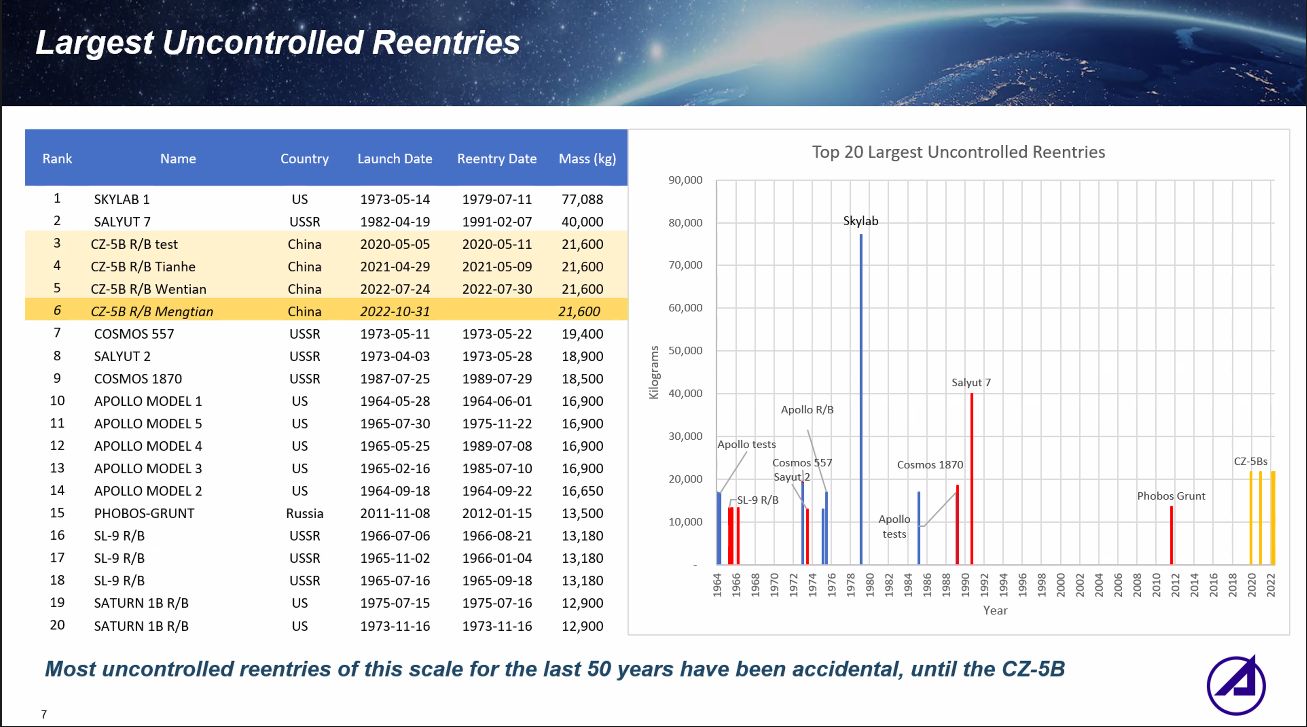
The Chinese rocket that will fall back to Earth in a few days is equivalent in size to two semi-truck trailers, and as much as 40 percent of this metal will reach the Earth's surface, experts say.
Although the overall risk of harm to people is low—there is only a 0.5 percent chance of injury or death to a human, based on one model—these risks are nonetheless higher than accepted by most spacefaring nations, said Ted Muelhaupt, a reentry and debris expert at The Aerospace Corporation.
Muelhaupt and other analysts spoke with reporters during a teleconference Wednesday, about two days before the predicted reentry of the Long March 5B core stage. As it acquires more orbital data, the nonprofit Aerospace Corporation plans to continue updating its entry forecast. As of Thursday morning, it predicted a reentry of 7:17 pm ET Friday (23:17 UTC), plus or minus 10 hours.
A Long March 5B rocket launched the 23-ton Mengtian module to the Chinese Tiangong space station on Monday. This modified version of China's most powerful rocket uses the massive core stage to push space station modules all the way to low-Earth orbit. Because this core stage lacks the capability to relight its engines for a controlled reentry into a desolate part of the world's oceans, the rocket could ultimately come back anywhere in the tropics and most of the mid-latitudes of the planet.
On the three previous launches of the Long March 5B booster—in 2020, 2021, and 2022—chunks of debris damaged villages in the Republic of Côte d'Ivoire, fell harmlessly into the Indian Ocean, and landed near villages in Borneo, respectively. Fortunately, no one has yet been injured by this falling debris.
According to The Aerospace Corporation, the reentry of these 21.6-metric-ton core stages comprises four of the six largest uncontrolled reentries from space during the last 50 years. They are behind only NASA's Skylab space station, in 1971, and the Soviet Union's Salyut 7 station in 1991.
Based on the core stage's orbit, it has the potential to affect landmasses where about 88 percent of the world's population lives, Muelhaupt said. Based on a simple model, he estimates that the chance of a casualty—defined as a death or injury—is between 1-in-230 and 1-in-1,000. The individual risk to any single person is extraordinarily low, about 6 per 10 trillion. You are many, many more times likely to be struck by lightning.

However, one's individual risk from falling Chinese rocket debris is not really the point, officials from The Aerospace Corporation said. Space agencies and companies in the United States, Europe, and elsewhere follow "norms" of behavior for much lower risks. For example, the acceptable risk of casualty is 1-in-10,000 from a human-made object reentering from space.
There are probably about half a dozen launches of the Long March 5B remaining in this configuration, in which the core stage goes all the way to orbit. Muelhaupt acknowledged that the country is unlikely to change the design of this rocket now that it has proven successful at delivering large pieces of hardware to space. But he hopes that future Chinese rocket designs find a better way to dispose of such large hardware without dropping tons of metal back on Earth.
"We’re trying to get an accepted norm of behavior," he said. "Treaties and laws are hard. Accepted norms can come from the ground up. For the next time they make a design like this, we hope they will take the reaction to this one into account."



3175x175(CURRENT).thumb.jpg.b05acc060982b36f5891ba728e6d953c.jpg)

Recommended Comments
There are no comments to display.
Join the conversation
You can post now and register later. If you have an account, sign in now to post with your account.
Note: Your post will require moderator approval before it will be visible.